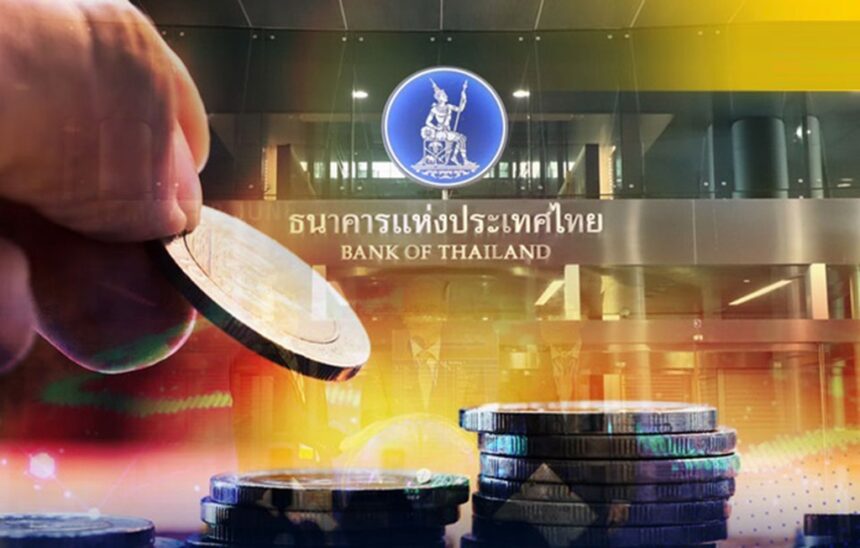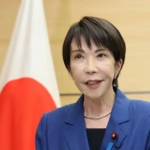BANGKOK – The Bank of Thailand left its policy rate at 1.5 per cent, a record low, after a closely watched vote. The Monetary Policy Committee voted 5-2 to hold, signalling caution as it tries to support a weak recovery while saving limited policy space for global trade shocks and rising domestic debt.
The split vote exposed differences over the pace of easing. Two members, unnamed under Bank of Thailand rules, called for a 25 basis point cut to 1.25 per cent. They argued it would help households and small firms hit by soft inflation and slow growth. The majority backed a steady hand, pointing to tight room for manoeuvre and the need to watch credit quality as non-performing loans increase.
This is the second straight hold after a unanimous quarter-point cut in August, which took rates to the lowest since 2021. It follows a series of reductions earlier in the year, from 2.5 per cent in late 2024. The shift hints at a move from heavy easing to a more watchful stance.
“The economy faces choppy conditions,” said Sakkapop Panyanukul, the MPC secretary. “Growth is holding up but remains exposed, and more easing must be timed so it does not lock in low inflation expectations.”
Thailand’s Growth Sluggish
Thailand’s growth story has lost its shine. GDP rose 2.8 per cent year-on-year in the second quarter, the same as the first quarter and under the 3.5 per cent pace seen before the pandemic. The BOT now expects 2.2 per cent growth in 2025, a small downgrade from June. Private consumption and tourism carry much of the weight.
The headline data hide deeper weaknesses. Goods exports, over half of GDP, jumped in the first half on a rebound in electronics and early shipments ahead of expected U.S. tariffs. The second half looks tougher.
Washington’s reciprocal duties, announced in April at up to 36 per cent on Thai products, with around half already in force, could trim 0.5 percentage points from growth. Factories, especially SMEs that hire 70 per cent of workers, face tougher import competition and supply chains shifting to Vietnam and Indonesia.
Tourism remains the brightest sector, but gains are uneven. Thailand welcomed 35 million visitors in 2024, close to pre-COVID levels. Forecasts for 40 million in 2025 point to a 5 per cent lift to services. Yet Chinese arrivals fell 10 per cent in early 2025 as China slowed, which hit hotel occupancy in Phuket and Pattaya.
A THB 145 billion digital wallet transfer lifted spending by 0.3 points last year, but it was a one-off. Households now look stretched, and retail sales growth eased to 2.1 per cent in September.
Core Inflation Remains Steady
Inflation stays weak. Headline inflation is set to average 0.2 per cent this year, slipping into mild deflation before firming to 0.9 per cent in 2026 as cheaper oil and food imports filter through. Core inflation is around 0.8 per cent, below the 1 to 3 per cent target. “Deflation risks are limited, but persistent low inflation can deter investment,” Mr Panyanukul said, warning that long spells under 1 per cent could mimic a Japan-style stagnation.
Debt is the main worry. Public debt has risen to 64.6 per cent of GDP as of August, from 63.7 per cent at the start of the year and up from 49 per cent in 2019. The IMF links the climb to repeated deficits, about 3 per cent of GDP since 2020, and ageing costs.
The level is still under Malaysia at 68 per cent and above Indonesia at 39 per cent, but rising. “Debt remains manageable for now,” the IMF’s Article IV report said, “yet growth under 3 per cent could push it toward 70 per cent by 2029 without revenue reforms.”
Household debt, at 88.4 per cent of GDP at end-2024, is the bigger pressure point and one of the highest in Asia after Australia. Non-productive loans, such as credit cards and personal finance, make up 28 per cent of the total.
NPLs jumped 14 per cent year-on-year to THB 1.2 trillion by September. The BOT has approved restructuring plans for 5 million borrowers, although take-up is slow. With current rates, low-income households spend about 20 per cent of their disposable income on interest.
Credit growth shows the strain. Overall lending grew 2.2 per cent year-on-year in January 2025, the slowest in two years, and far below the 5.4 per cent average over the past decade. Banks tightened standards after NPLs rose in autos and property, up 2.5 points to 3.8 per cent.
Thailand Bond Yields Down
SME borrowers face the sharpest squeeze, with rejection rates at 40 per cent. “Credit is the economy’s lifeblood, and it is clogging,” said Chalongphob Sribhadung, chief economist at Kasikorn Research Centre. The MPC said it will monitor conditions, and could use tools such as loan-to-value limits if growth slips under 2 per cent.
The baht has edged higher, up 2 per cent against the dollar since August on safe-haven flows. Swings are likely as the U.S. Federal Reserve signals its path and China’s property sector remains weak. Bond yields have dropped, with 10-year notes near 1.8 per cent, as markets bet on more support. Equities lag. The SET Index is flat this year after THB 150 billion in foreign outflows.
For Prime Minister Anutin Charnvirakul’s coalition, the BOT’s stance cuts both ways. An easier policy would help fund plans on healthcare and infrastructure under the THB 3 trillion budget. It could also fuel risk in a system already heavy with debt.
Political uncertainty, including a court case over her leadership, has delayed the 2026 budget and weighed on public investment and business confidence.
The MPC has left the door open to easing. Markets put the odds of a November cut at 70 per cent if third-quarter GDP disappoints. Risks skew to the downside. U.S. tariffs could increase under a Trump return, and China’s demand remains soft. Against that backdrop, 2.2 per cent growth looks brave.
“Structural reforms are overdue,” said Kiatipong Ariyapruchya, World Bank lead economist, citing digital skills, SME credit guarantees, and a broader tax base. Without reform, Thailand risks a slow decade, where low rates support today but hold back tomorrow.
In Bangkok’s sticky heat, tuk-tuks thread past glossy malls, and the contrast is striking. A country of 70 million, upper-middle income yet unequal, ships high-end goods while many factories sit idle. The MPC’s hold buys time, but time is in short supply.














